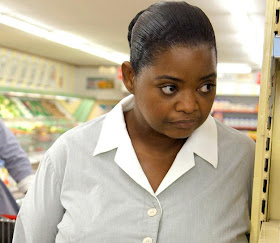 |
| Photo Courtesy |
Foodies know sweet and sour is a mouthwatering, memorable taste.
Over the years, cooks have experimented with contrary flavors combining sweet and salty, adding apples to pork dishes, pineapple to pizza, mayonnaise or bananas to peanut butter, and etc.
Odd flavor combinations create a je ne sais quoi sensation causing the taster to come back for more.
~
Sometimes we are faced with the same ol' same ol':
It didn't take long for me to become bored with Saturday morning cartoons. Every week the same story filled the time. The only difference was the setting and perhaps a few different characters. Even the opening music drove me crazy because I knew another boring story was about to begin. (Bugs Bunny and Road Runner, excluded)
It took several weeks for me to find an alternative which pleased my children. When I finally succeeded, my ears and mind eased and life was good.
The gift of writing enables us to mix up the flavors of a story in such a way that the reader walks away with a mouthwatering, memorable taste.
Consider the last boring book you read--don't give the title. What made this book boring to you?
Did you fall asleep during the character's conversations?
Did you get lost in detailed descriptions?
Perhaps the story was too simple, lacking in the frenzied or explosive moment. Something to make you gasp and whip the page to read what happened next.
Or maybe you can't put your finger on the problem…the story simply was boring.
As we write our stories, we sometimes fall so in love with our characters, the theme, or the plot that we are blinded to missing ingredients. The story may be fine…but in need of salt to magnify and enhance.
Today we are going to look at ways to incorporate the contrary into our books.
The contrary is more than the unexpected. After all I did not expect some of the wacko characters introduced in the boring Saturday morning cartoons.
The contrary ingredient, when used in writing, is a good quality (like in cooking).
It adds
* an intriguing clash,
* a new perspective,
* a fresh appeal
* a jingle quality (something which stirs readers to repeat over and over)
* a relatable characteristic that takes the reader out of their own situation and transports them far away.
* and much more.
Some examples of contrary stories that have remained fresh in our minds are:
Cinderella - the poor servant girl marries the rich. Rags to riches. Peasant turned Princess.
Pinocchio - the naughty boy is redeemed. Personification becomes reality.
Lion and Mouse fable - The only one who could save the lion was the mouse who ate away the ropes which bound him.
Two aspects we can look at to help create the contrary are:
The Grass is Greener Syndrome. These stories are entertainment based. Usually have humor, and the character's revelation of misconception. A decision is demanded in the end: which side of the fence truly has the greener grass.
The Climb the Ladder Syndrome. These stories fictionalize self improvement. The character learns organization skills, determination, standing up for oneself, etc to pull himself out of the mess he was in. The journey is difficult, but the character arrives in the end.
The Fallen Redemption Syndrome. The hero falls must be redeemed. The hero starts off as the best then, by some action, falls into grave trouble and must either earn their way back up or must receive special help to regain their place.
I am not an expert on Steampunk (maybe Pepper will chime in here to help me), but my understanding is this genre is an example of infusing the contrary. Set in an alternative history, and in a time when steam-powered machines are the norm, characters lives are influenced by futuristic inventions. Think of Sherlock Holmes meets Iron Man.
Susan Messiner stories merge two similar events from two different centuries. Her stories seamlessly infuse the time difference like whipped cream on lemon pie.
The Apostle Paul, in Romans 8: 37-39, demonstrates the vibrancy of using contrary to communicate a message:
Yet in all these things we are more than conquerors through Him who loved us. 38 For I am persuaded that neither death nor life, nor angels nor principalities nor powers, nor things present nor things to come, 39 nor height nor depth, nor any other created thing, shall be able to separate us from the love of God which is in Christ Jesus our Lord.
I hope this discussion has stimulated your fantastic writing thoughts.
Your turn:
Consider places in your story where you have been able to show the contrary. This can be found in the plot as a whole, in chapters, or in scenes.
How can you add a greater contrary component to your story to deepen the vibrancy, enhance the wow, and plant a hard-to-forget factor?
**********************************************************
Mary has moved to Michigan with her husband, closer to her three college kids. She misses the mountains of Montana, but loves seeing family more often. She writes contemporary and romance Christian fiction, is honing marketing and writing skills, and loves to pen missionary and Bible adventure stories on her ministry blog, God Loves Kids.
Visit Mary at her website and her ministry blog to families: God Loves Kids. Or chat on Facebook or Twitter




























